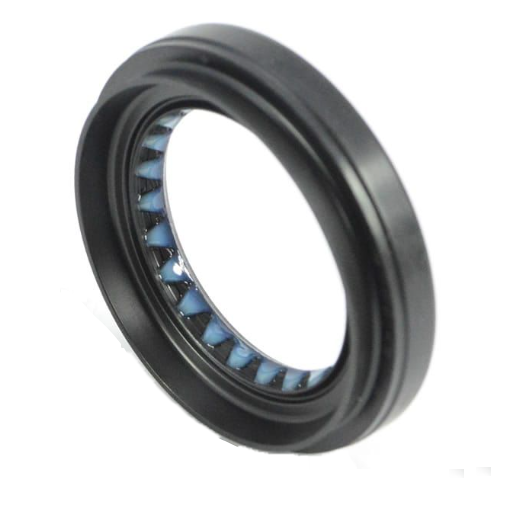Durable O-Rings Designed for Fuel Resistance and Versatile Applications
Understanding Fuel Resistant O-Rings Vital Components for Engine Durability
In the world of machinery and automotive engineering, the reliability and efficiency of various components are paramount. One such critical component that ensures the longevity and performance of engines is the O-ring. Among many types of O-rings, fuel resistant O-rings play a crucial role in sealing applications that involve exposure to fuels and other aggressive fluids.
What are O-Rings?
O-rings are circular mechanical gaskets that are used to prevent the leakage of fluids or gases in various machines and systems. Made from various materials that can withstand different environmental conditions, O-rings are essential in numerous applications, from automotive engines to household appliances. Their simple design, which consists of a round cross-section, allows them to fit securely into grooves and create a reliable seal when compressed between two surfaces.
The Importance of Fuel Resistant O-Rings
Fuel resistant O-rings are specifically designed to withstand the harsh conditions associated with fuel systems. They offer resistance to chemical degradation, temperature fluctuations, and physical wear, which are common challenges when materials come into contact with petroleum-based products. In automotive applications, fuel resistant O-rings are crucial for preventing leaks in fuel tanks, fuel lines, injectors, and carburetors.
When O-rings deteriorate due to exposure to fuels, they can cause various issues. Leaks can lead to loss of efficiency, increased emissions, and, in severe instances, fire hazards. Thus, choosing the right O-ring material for fuel applications is vital for ensuring safety and performance.
Materials Used for Fuel Resistant O-Rings
Several materials are commonly used to produce fuel resistant O-rings, including
fuel resistant o rings

1. Nitrile Rubber (NBR) This is one of the most widely used materials for fuel resistant O-rings. Nitrile offers excellent resistance to petroleum-based fuels, oils, and greases. Its ability to withstand high temperatures, along with its mechanical toughness, makes it a popular choice in automotive applications.
2. Fluorocarbon Rubber (FKM) Known for its superior resistance to high temperatures and aggressive fluids, fluorocarbon rubber is often used in high-performance engines. FKM O-rings can withstand a broader range of chemicals than NBR, making them suitable for more demanding environments.
3. Ethylene Propylene Diene Monomer (EPDM) This synthetic rubber can resist a variety of chemicals, including certain fuel types; however, its performance is not as robust as Nitrile or FKM in heavily fuel-saturated environments. Nevertheless, EPDM is often utilized for less demanding applications due to its affordability.
4. Polyurethane (PU) With excellent abrasion resistance and elasticity, polyurethane O-rings can also be formulated to resist certain fuels. They are well-suited for high-pressure applications but may not perform as well as their rubber counterparts in all fuel applications.
Selecting the Right O-Ring
Choosing the right fuel resistant O-ring requires careful consideration of several factors, including the specific type of fuel, temperature range, pressure conditions, and the compatibility of the O-ring material with the other components in the system. Engineers often refer to material compatibility charts or consult with manufacturers to ensure the correct choice.
Additionally, the size and cross-section of the O-ring are critical. A proper installation is also necessary to avoid potential failures; O-rings must be compressed just the right amount to create a seal without being overly stressed.
Conclusion
Fuel resistant O-rings are indispensable components in the automotive and machinery industries. By preventing leaks and ensuring the efficient operation of fuel systems, these O-rings not only enhance performance but also contribute to overall safety. With various materials available, selecting the right O-ring for specific applications is crucial to ensure durability and reliability in environments where fuels are present. As technology continues to advance, the development of new materials and designs for O-rings will likely enhance their capabilities, making them even more robust and essential for modern engine systems.
-
Simplifying Oil Changes: A Comprehensive Guide to Oil Drain Plugs and Their Variants
News Aug.04,2025
-
Mastering Oil Drain Maintenance: Solutions for Stripped, Worn, and Upgraded Oil Plugs
News Aug.04,2025
-
Fixing Oil Pan Plug Issues: Leaks, Stripped Nuts, and the Right Replacement Solutions
News Aug.04,2025
-
Everything You Need to Know About Oil Drain Plugs: Sizes, Fixes, and Upgrades
News Aug.04,2025
-
Choosing the Right Oil Drain Plug: A Guide to Sizes, Materials, and Drain Innovations
News Aug.04,2025
-
A Complete Guide to Automotive Drain Plugs: Types, Problems, and Innovative Solutions
News Aug.04,2025
-
The Ultimate Guide to Car Repair Kits: Tools and Essentials Every Driver Should Own
News Aug.01,2025
Products categories















